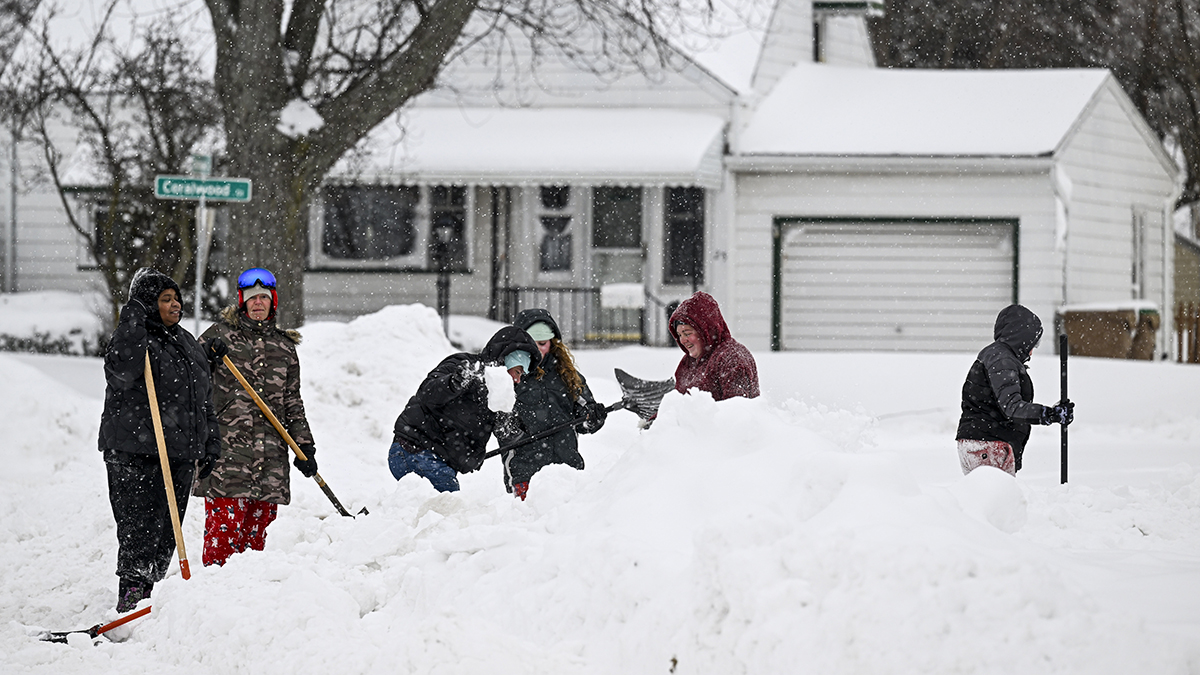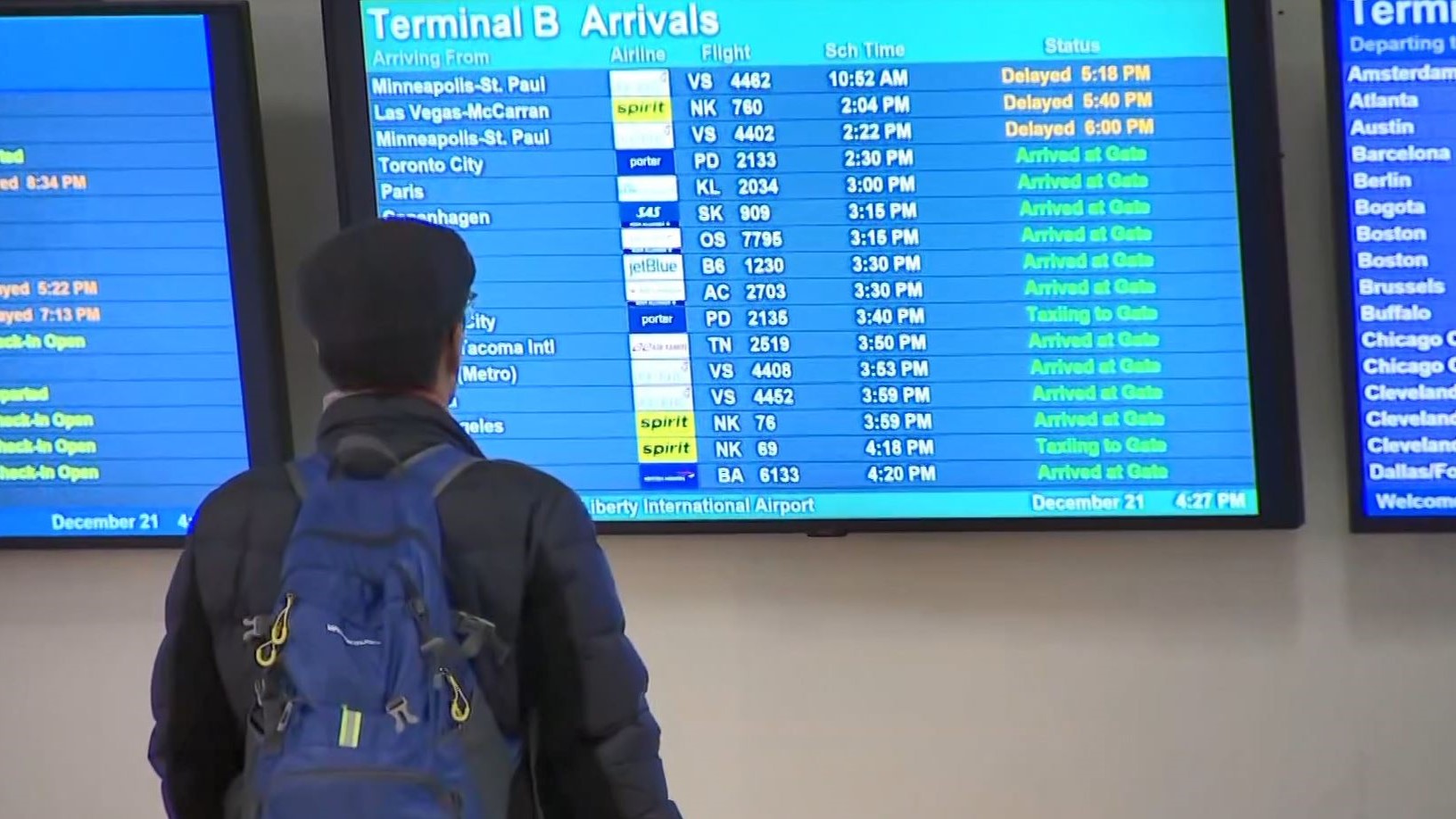The New York State Thruway, along with a number of other major highways that had been closed during the unprecedented winter blast that killed more than two dozen people over the holiday weekend, reopened Tuesday, Gov. Kathy Hochul announced, as the president approved her request for federal emergency disaster aid.
Along with the Thruway, Hochul said I-290, I-190 (Niagara County section and Erie County section north of I-290), I-990, state Routes 400 and 219 had fully reopened following one of the most consequential snowstorms in state history. The Buffalo airport is set to reopen at 11 a.m. Wednesday.
Work remains to be done on the remaining Erie County sections of I-190 and State Routes 5, 33, and 198, with the Democratic governor saying those should reopen by Wednesday if not sooner. All border crossings, including the Peace Bridge, Rainbow Bridge and the Lewiston-Queenston Bridge, have been reopened. Some traffic changes around the Thruway remain in effect. See full details on the latest detours and closures, as well as reopenings, here.
"With today's reopening of major highways across Western New York, we are finally turning the corner on this once-in-a-generation storm," Hochul said in a statement. "That doesn't mean we can let our guards down, as it will take many more days for the region to dig out. But this is still good news and I urge motorists to drive carefully and cautiously, follow the rules of the road and be safe behind the wheel."
Get Tri-state area news and weather forecasts to your inbox. Sign up for NBC New York newsletters.
The once-in-a-century blizzard began Thursday and continues to impact Western New York, the Finger Lakes and North Country regions, where the storm brought blizzard-like conditions, sustained wind gusts of more than 60 miles per hour, and well-below-freezing temperatures through the holiday weekend. It was one of the worst weather-related disasters ever, and it will likely take some time to calculate the full toll.
President Joe Biden approved Hochul's request for a federal emergency declaration in Erie and Genesee counties Monday night, expediting federal assistance to support the state's ongoing recovery and response operations. A state of emergency, which Hochul declared in advance of the storm, remains in place, the governor said Tuesday.
And the snow threat apparently isn't over.
Another two inches of snow fell Tuesday in Erie County, which includes Buffalo, the second-largest city in New York, with about 275,000 residents. It is still counting its dead.
More Coverage
Mayor Byron Brown’s office announced more storm-related deaths Tuesday, bringing Buffalo’s total to 31, along with additional suburban fatalities. The toll surpasses that of the historic Blizzard of 1977, blamed for killing as many as 29 people in a region known for harsh winter weather.
Nationwide, the death toll has surpassed five dozen and continues to rise.
Stretching from the Great Lakes near Canada to the Rio Grande along the Mexican border, the storm had killed at least 63 people as of Monday morning, according to an NBC News tally. The deaths were recorded in 12 states: Colorado, Illinois, Kansas, Kentucky, Michigan, Missouri, Nebraska, New York, Ohio, Oklahoma, Tennessee and Wisconsin.




